Recent Articles
Popular Makes
Body Types
2020 Jeep Wrangler Road Test and Review
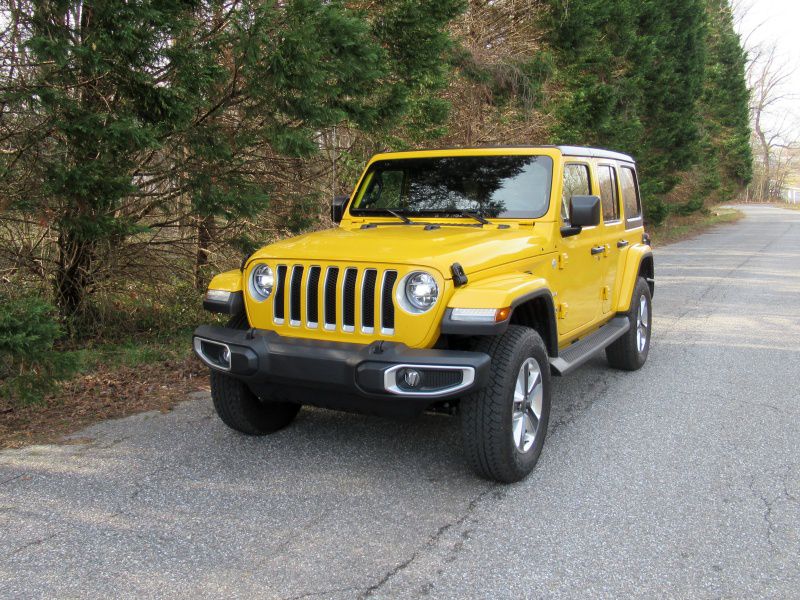
12020JeepWrangler ・ Photo by Brady Holt
There are lots of SUVs you can buy today that are spacious, comfortable, and quiet — mild-mannered cars on stilts that are perfectly executed for the daily grind. Objectively, these crossovers are just what nearly everyone needs. But subjectively, these overwhelmingly sensible vehicles can lack personality and character. They’re the smart choice, but not often the fun one.
That’s why the Jeep Wrangler is one of the best-selling SUVs today. From its military-grade styling, to its unsurpassed off-road capability, to its unique ability to remove its roof and doors, the Wrangler is suffused with character. What’s more, unlike a zippy little sports car, the Wrangler also delivers some practicality to go with its fun factor — five spacious seats, a big cargo hold, the all-weather security of four-wheel-drive, and more creature comforts than you might think. If you like the idea of a Jeep but are worried whether it’s too old-school for your modern life, read on as we cover this off-road icon’s pros and cons. Prices start at $28,295.
Iconic Design
You can still buy a two-door Jeep Wrangler, which maintains an impressively direct link to its origin as a World War II military vehicle. Jeep has tweaked the design details over the years, but you still get two round headlights with seven vertical grille slats between them, 1940s-style fenders, and a spare tire mounted on the back. The two-door Wrangler is also still a small SUV; at just 167 inches long, it’s the size of a subcompact crossover like the Honda HR-V and Toyota C-HR.
Today, nearly everyone opts for the extra practicality of the extended-length four-door Wrangler Unlimited, whose 188-inch length bumps it to the mid-size SUV class alongside such models as the Honda Passport and Toyota 4Runner. The Unlimited doesn’t have the silhouette of a vintage Army Jeep, but this long boxy vehicle still looks like nothing else on the road. A crew of tree trimmers crowded around a “Punk’n Metallic” orange test vehicle in our driveway like it was a rare exotic. Even if Jeeps aren’t unusual, their cool factor is hard to dispute.
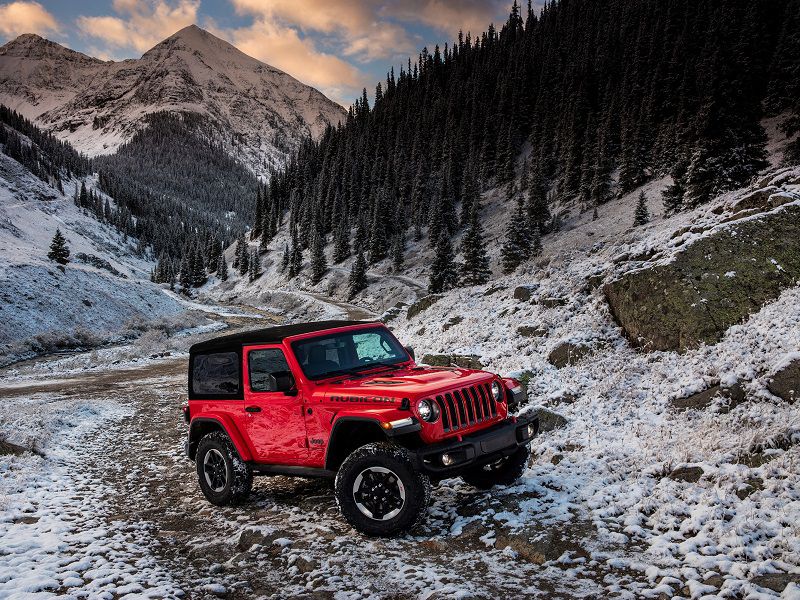
Photo by Fiat Chrysler Automobiles
Astounding Capability
It’s so easy for carmakers to dilute a special vehicle in an attempt to broaden its appeal. We see it with sports cars that get softer rides, and with SUVs and trucks that trade off-road ability for on-road comfort. Every time Jeep redesigns the Wrangler (most recently in 2018), fans hold their breaths awaiting the inevitable destruction of their beloved vehicle — but it never comes.
Every Wrangler comes standard with one of three four-wheel-drive systems, and even the base Command-Trac includes a low range for off-road conditions. The optional Selec-Trac automatically adjusts the power sent to each of the four wheels, while the top-tier Rubicon’s Rock-Trac brings heavy-duty Dana axles with front and rear locking capability, an upgraded two-speed low-range transfer case, an electronic sway-bar disconnection, and beefed-up suspension and tires. On top of all that, all Wranglers get the unique ability to remove the windows and doors and even fold down its windshield — providing a wind-in-your-hair experience whether you’re tackling the trails or heading to the grocery store.
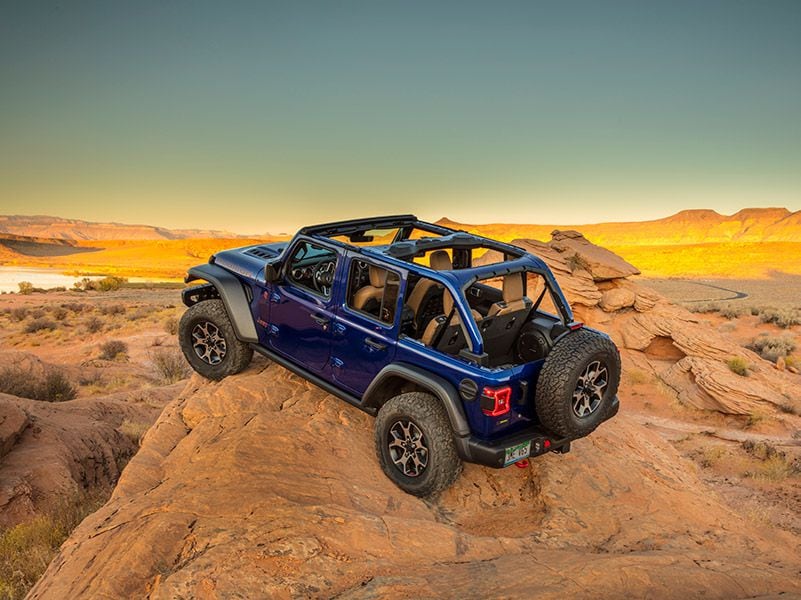
Photo by Fiat Chrysler Automobiles
Improving Civility
The Wrangler doesn’t look or feel like other SUVs. It’s a throwback to an earlier time, with vague, slow steering responses and a bouncy, noisy ride. But that’s also part of the Wrangler’s charm. What’s more, the vehicle continues to evolve. It’s crude compared to a 2020 Honda CR-V but a luxury car in comparison to a Wrangler from, say, 1995, or even 2005. You’ll still need a steady hand on the steering wheel — if you’re planning to text and drive, stick to the CR-V (or, better still, to the bus) — but recent Wranglers have become better-behaved in corners and at highway cruising.
The Wrangler’s interior also reveals the vehicle’s improving civility. While it’s still designed first and foremost to get dirty and get hosed out, cabin design and build quality no longer feel like an afterthought. It’s still a hardy Jeep, but it generally lives up to its elevated prices better than before. Styrofoam-looking insulation for the hardtop roof is neither rugged nor classy, though. Buyers get a well-executed infotainment system — 5 inches on the base models, 7 inches in most of the Wrangler range, and 8.4 inches with the optional in-dash navigation.
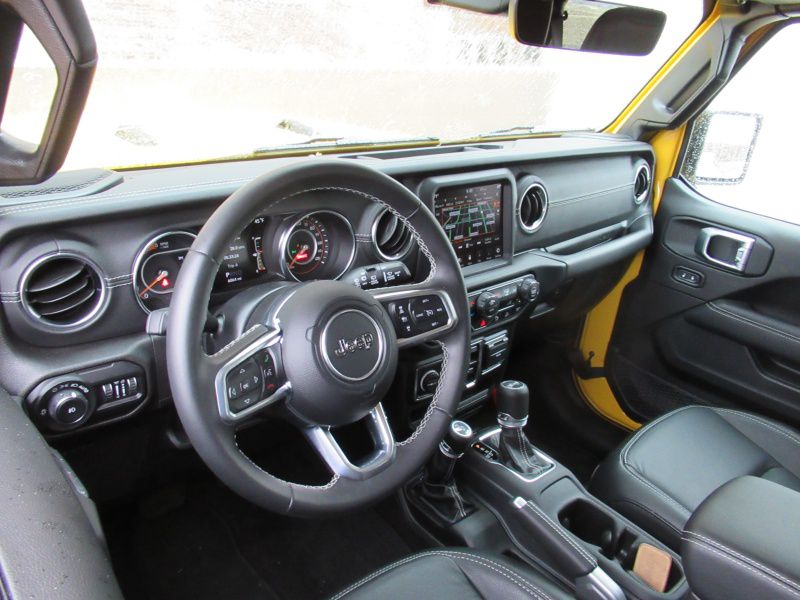
Photo by Brady Holt
Amazing Fuel Economy
The Wrangler offers a choice of three powerful engines. A 3.6-liter V6 with 285 horsepower and 260 lb-ft of torque is standard, while buyers can pay extra for a 2.0-liter turbocharged four-cylinder (270 hp, 295 lb-ft) or a newly introduced 3.0-liter turbodiesel V6 (260 hp, 442 lb-ft). Each of these engines is available with an eight-speed automatic transmission, with a six-speed manual transmission standard on the V6.
These advanced powertrains help the Wrangler match or even beat similarly sized SUVs and crossovers for fuel-efficiency — turning a longtime weak point into a strength. The EPA rates the gas V6 at 19 mpg in mixed driving with the manual transmission and 20 mpg with the automatic; the four-cylinder at 21 mpg; and the diesel at 25 mpg. Our (non-scientifically) tested Wranglers saw a wider spread: 18 mpg with the V6 automatic, 23 mpg with the four-cylinder (on premium fuel), and an incredible 28 mpg with the diesel. Note that the four-cylinder and diesel are both extra-cost options and that the four-cylinder will strike some purists as too quiet for a Wrangler. The torquey and cheerfully clattering diesel, on the other hand, is perfectly suited to the vehicle.
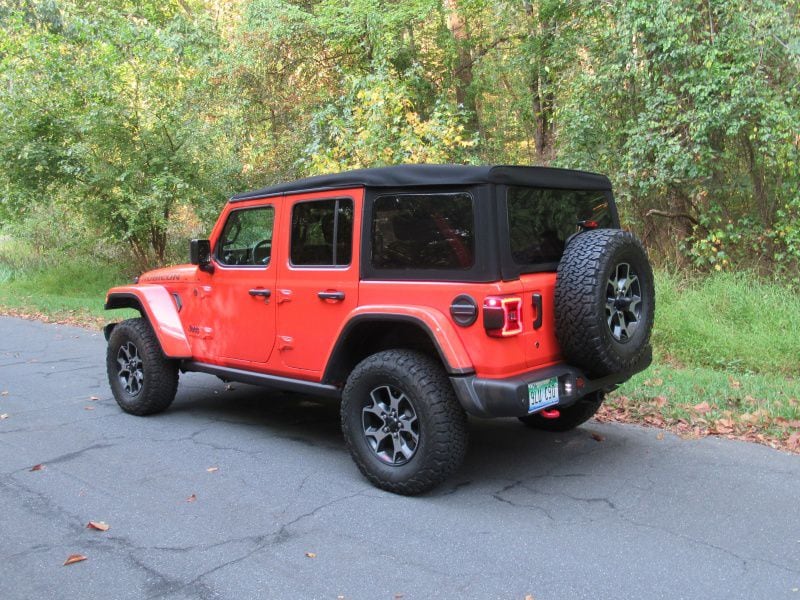
Photo by Brady Holt
Decent Utility
The Wrangler is an off-road vehicle first and a functional family car second. Even so, it doesn’t entirely neglect the latter point, especially in four-door Unlimited form. There’s respectable passenger space, though elderly passengers may wince at clambering up into this high vehicle. And cargo capacity reaches a useful 32 cubic feet of cargo space behind the rear seat and 72 cubic feet with the rear seat folded, more than a Nissan Murano crossover. (The two-door Wrangler is understandably more cramped but has the advantage of city-friendly dimensions for easy parking.)
An important caveat is that it’s not necessarily easy to access the Wrangler's cargo space. Its swing-out cargo door is cumbersome if you’re in a tight garage or parallel-parking space, and you have to raise the rear windshield separately. That’s simple enough in the pictured hardtop model, but the standard soft top requires you to unmount the plastic rear windshield if you want more than a small access portal to your cargo hold. For cargo outside the cabin, the Wrangler is rated to tow up to 3,500 pounds with any of its three engines.
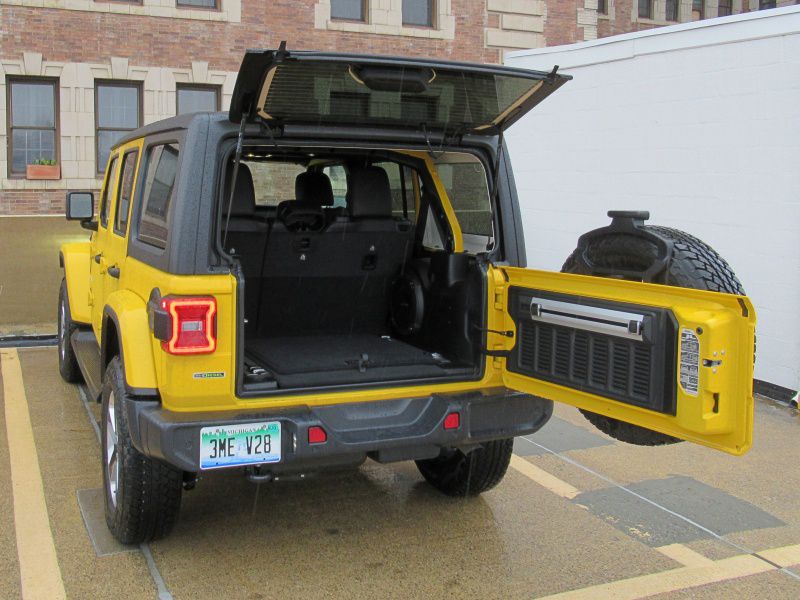
Photo by Brady Holt
Modern Safety Technology
Despite its old-school image, the 2020 Wrangler is available with a host of advanced safety and driver-assistance technologies. These include blind-spot monitoring with a rear cross-traffic alert, adaptive cruise control, and automatic emergency braking, though not a lane-departure warning or automatic steering corrections. However, all of these systems are extra-cost options, even on the priciest Wrangler trim levels. Most of its standard safety features are federal requirements these days: airbags, a backup camera, and antilock brakes with electronic stability control.
The current-generation Wrangler hasn’t undergone the normal battery of crash tests by NHTSA or the IIHS. And drivers who remove the doors should be warned that while it’s fun, they’re giving up some protection in a side-impact collision — along with their sideview mirrors and, if equipped, the blind-spot monitoring system.
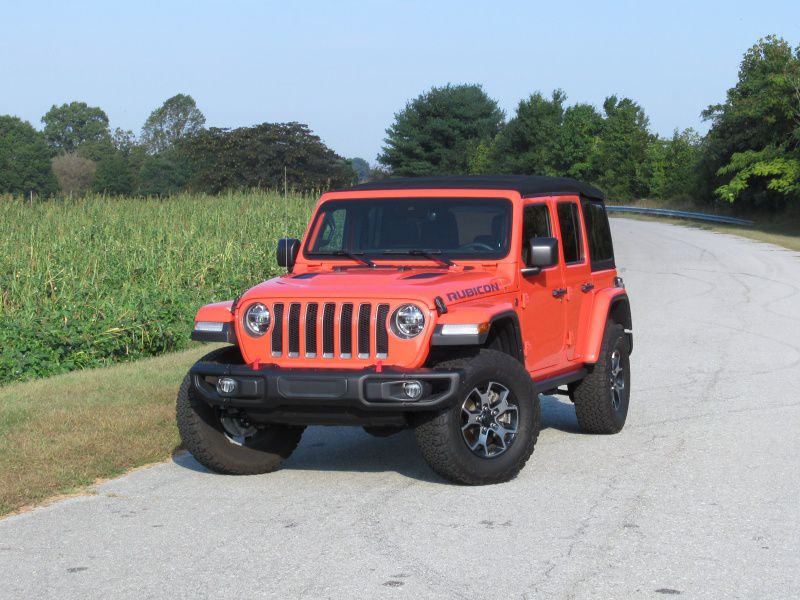
Photo by Brady Holt
Luxury-Car Prices
It’s not just safety features that cost extra; nearly everything we take for granted today is optional equipment on a Wrangler. This quickly elevates the vehicle’s price from its starting point of $28,295 for a two-door Wrangler and $31,795 for a four-door Unlimited. What’s that, you wanted air conditioning in your $30,000 SUV?
You can get lots of luxury equipment in a Wrangler. Heated leather seats (though no power adjustments), advanced infotainment, a partially power-operated soft-top roof, automatic climate control, a dizzying array of cosmetic customizations — it’s all available if you spend enough. We’ve recently tested three Wranglers that all topped $50,000. Even the automatic transmission costs $2,000 and the diesel (available only on the Unlimited) adds another $4,000 on top of that. True, the Wrangler can do things that would turn a BMW X3 crossover into a shattered pile of wood trim and fancy suspension components, but just know that Jeep will charge you BMW prices for one. Note that you can get a decently equipped Unlimited Sport S model for around $40,000, but that’s still hardly peanuts.
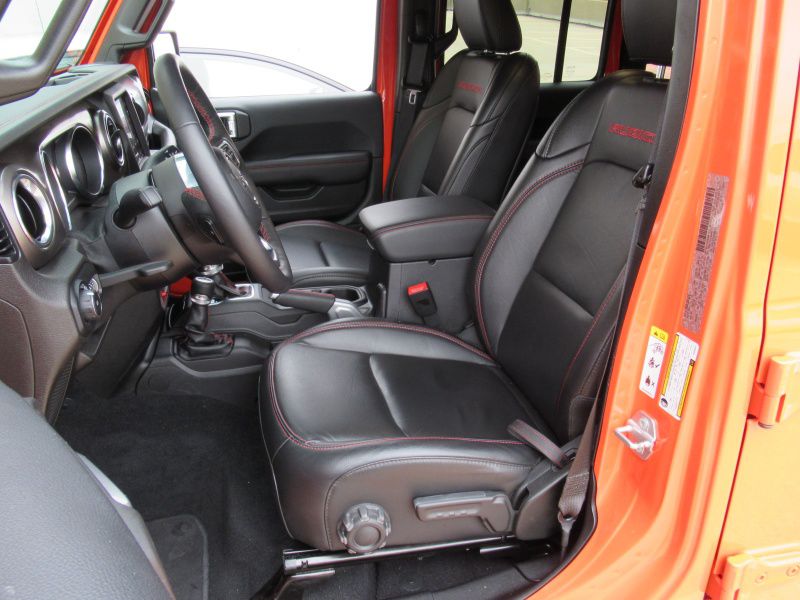
Photo by Brady Holt
Today's Alternatives
The 2020 Jeep Wrangler has no direct competitors today. But we’ll focus our attention on the Toyota 4Runner, another relic of the age when SUVs were tough. Last redesigned way back in 2010, the 4Runner doesn’t have much more on-road polish than the Wrangler, and the Jeep stomps it for power and fuel economy. Plus, you can’t take off the doors or roof and hose out the cabin. But the Toyota joins the Jeep in standing apart from the pleasantly anonymous ranks of crossovers, and in offering outstanding off-road capability. And it’s roomier and less expensive when comparably equipped.
We’d also shop the Wrangler against mid-size pickups like the Toyota Tacoma, Ford Ranger, and Chevrolet Colorado. They chase the same off-road-lifestyle customer as the Wrangler, though trading some of the Jeep’s fun for superior hauling ability and lower prices. And if you like an open bed, the newly introduced Jeep Gladiator is essentially a pickup version of the Wrangler.
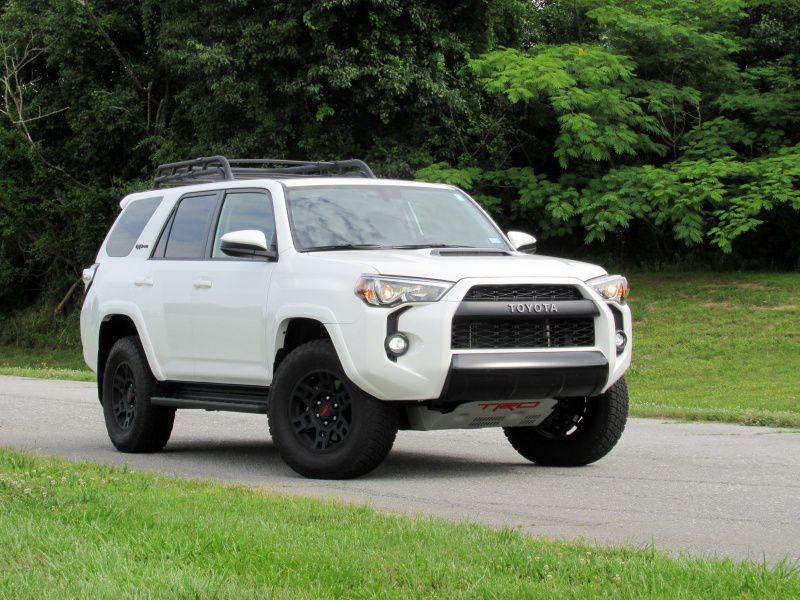
Photo by Brady Holt
Looking to the Future
The elephant in the room for the Jeep Wrangler is the upcoming Ford Bronco — the most direct challenger Jeep has faced in decades. Ford is bringing back this storied name for a Wrangler-sized SUV that promises incredible off-road ability and, in a clear shot across Jeep’s bow, a convertible top and removable doors.
We’re eager to see what Ford has done. But with Jeep’s continuous improvements to the Wrangler and its decades of experience with the vehicle, we doubt the Bronco will prance to an easy victory. Jeep’s blend of a fun vibe with serious capability and everyday usability will be tough for Ford to surpass. The Wrangler’s improving fuel economy just adds to the appeal. Perhaps, though, the fresh competition will force Wrangler prices out of the stratosphere — and we’d have no complaints there.
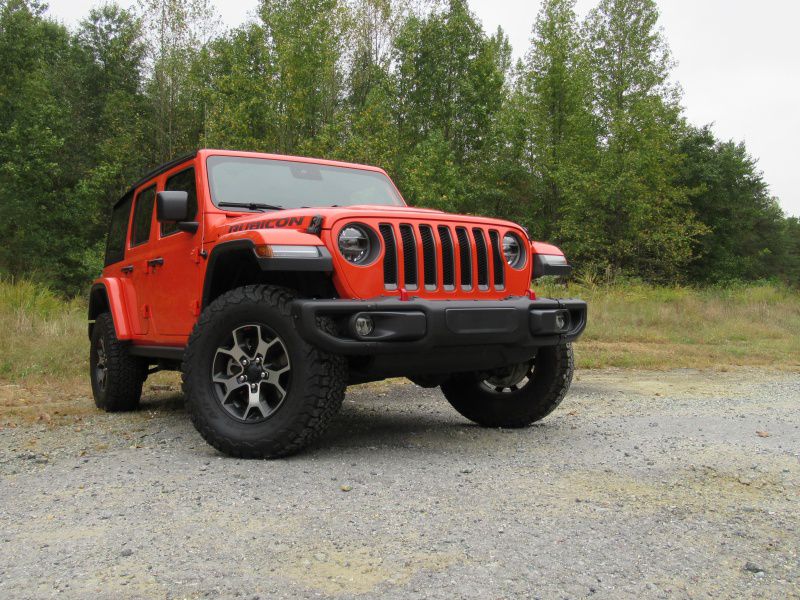
Photo by Brady Holt